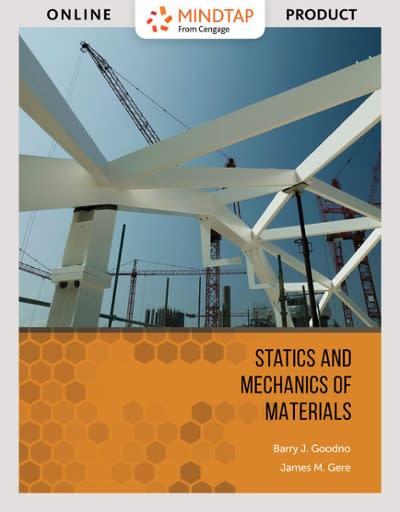Question
What is Intellectual Property (IP)? Give some examples. Discuss the use and meaning of copyright, patent, trade marks, trade secrets. How do these laws protect
What is Intellectual Property (IP)? Give some examples. Discuss the use and meaning of copyright, patent, trade marks, trade secrets. How do these laws protect IP? Why were these laws introduced? What problems do these laws have in their use? How does an organization protect trade secrets?
2) What is fraud? What is 'insider fraud'? What are the main motivators of fraud? What techniques can be used to identify fraud? What conditions invite fraud in an organization? What approaches are used to prevent fraud?
3) What is privacy? Discuss the concepts of autonomy, solitude and identity in relation to privacy. Communications and data privacy are concerns that must be considered in the development of Information systems, describe how systems design can be affected by these concerns. What is identity theft? Give some examples of identity theft. What do the terms 'opt-in' and 'opt-out' mean?
4) What is 'Profiling'? Profiling's use is widespread in the online environment. It is used for marketing of goods, identifying markets, criminal investigation, and in political campaigns. How is profiling useful? What problems does it introduce?
5) Describe the terms 'Risk Assessment' and 'Risk Management'. How do these terms relate to one another? What are the main steps in a Risk Assessment?
6) Compare tort law to contract law. What is negligence? What is 'due care'? How does one prove negligence? What is defamation? What factors are used to determine defamation?
7) What is data matching? What are the common techniques used to match data? What are false positives and false negatives? What problems can occur when trying to match data across different data sets? What legal and ethical issues can arise from using data matching?
8) What is Jurisdiction? When taking (or avoiding) legal action, jurisdiction must be determined. In what ways can jurisdiction be determined? How and why do companies try to set the jurisdiction?
9) What is a license? Is a license a contract? What is open source software? Briefly discuss the different types of open source licenses. Can you charge for open source software? Can you use parts of open source software in a product you are selling? Is open source software copyrighted? What is source code? Object code? List some of the standard open source licenses.
11, Define the following: Tort law, Criminal Law, Defamation, Negligence, Nuisance, Cyber bullying, Cyber stalking, injunction, copyright, patent, trademark, contract, EULA, fraud, free software, open source software, proprietary software,
Answer the following:
TORTS
To prove defamation, what must one show? Give an example of defamation. To prove negligence, what must one show? Give an example of negligence. What is strict liability?
FRAUD
Fraud can be committed by insiders and come from outside. What is fraud? What are the main reasons for committing fraud? What are the conditions in an organization that may invite fraud? In the past, organisations have shown reluctance to take action against fraudsters, report it to authorities, or make the fact public. Explain why organisations have done this and why.
RISK
What is risk management? Risk assessment? What would a risk assessment report include? What activities are involved in performing a risk assessment? In an organization that has a risk management strategy, what activities and structures would you expect to see?
SOFTWARE
What is a EULA? Is a EULA a contract? The free software movement has been active for many years. What arguments does it put for free software? Open source software may be free, but it is usually supplied subject to an EULA. What kind of conditions do EULA's put on the users of open source software? Some large software organisations participate in the development of open source software. Why would they choose this model for software release? Red Hat supplies a version of Linux as a free open source product. How do they make a profit from this?
COPYRIGHT, PATENT, TRADEMARK
Describe the terms copyright, patent, and trademark. Explain why governments have put these legal structures in place. Describe where an organization may choose to use these legal protections.
FREE SPEECH, PRIVACY
What is privacy? What frameworks are in place in Australia to protect one's privacy? In what ways might a business interfere with one's privacy in the normal course of business? What obligations or regulations impact on a businesses use of an individual's data? On what basis does one have free speech in Australia? How does Australia's free speech provisions compare to those of the US?
Discuss any legal issues that may occur in the following case study. Comment how some of the legal risks may be avoided.
Fast Games LTD produced a new game, Fast Bug, which uses features available in an augmented reality headset. The coding required was extensive and involved developing many unique gaming features as well as a good storyline. The game has proved very popular and another company, Sparkle LTD obtained a retail copy of the game and because of Fast Bug's unique features decided to build a game with a different story line, but to include features similar to those in Fast Bug. Recognizing the difficulty of coding some of the new features, they hire an ex-employee from Fast Games LTD to guide the development of the features required for their new game Over Hill.
Step by Step Solution
There are 3 Steps involved in it
Step: 1

Get Instant Access to Expert-Tailored Solutions
See step-by-step solutions with expert insights and AI powered tools for academic success
Step: 2

Step: 3

Ace Your Homework with AI
Get the answers you need in no time with our AI-driven, step-by-step assistance
Get Started


